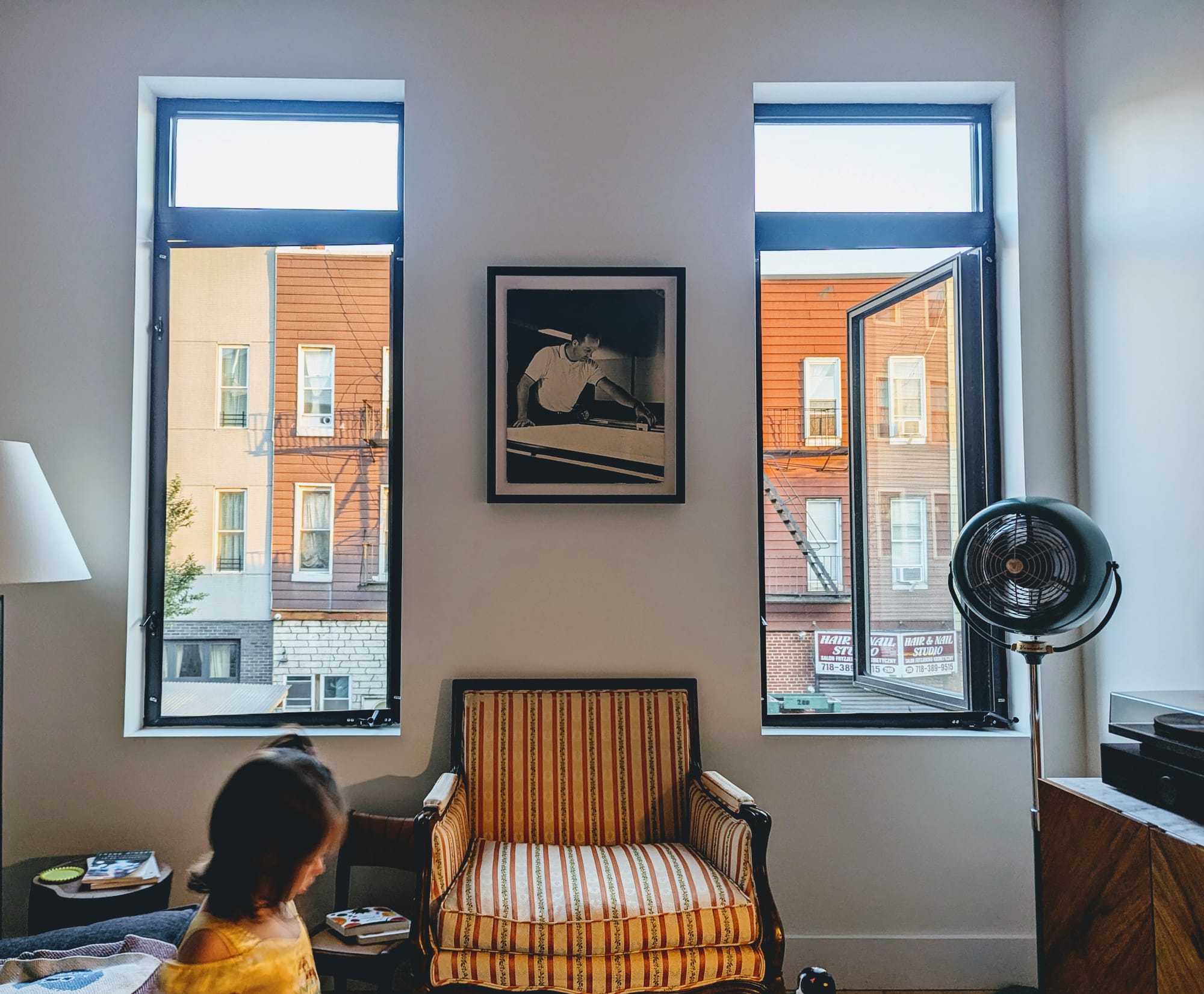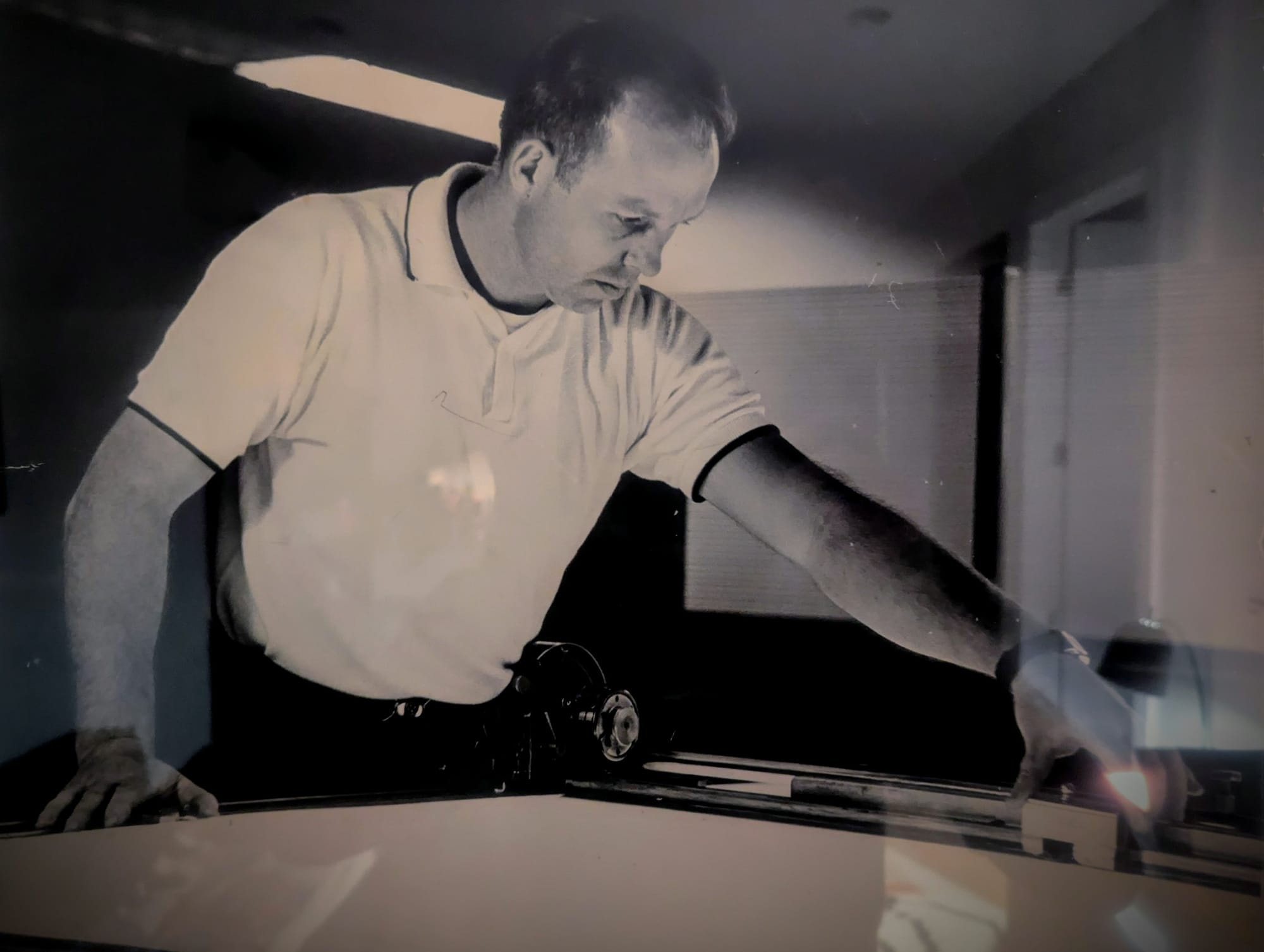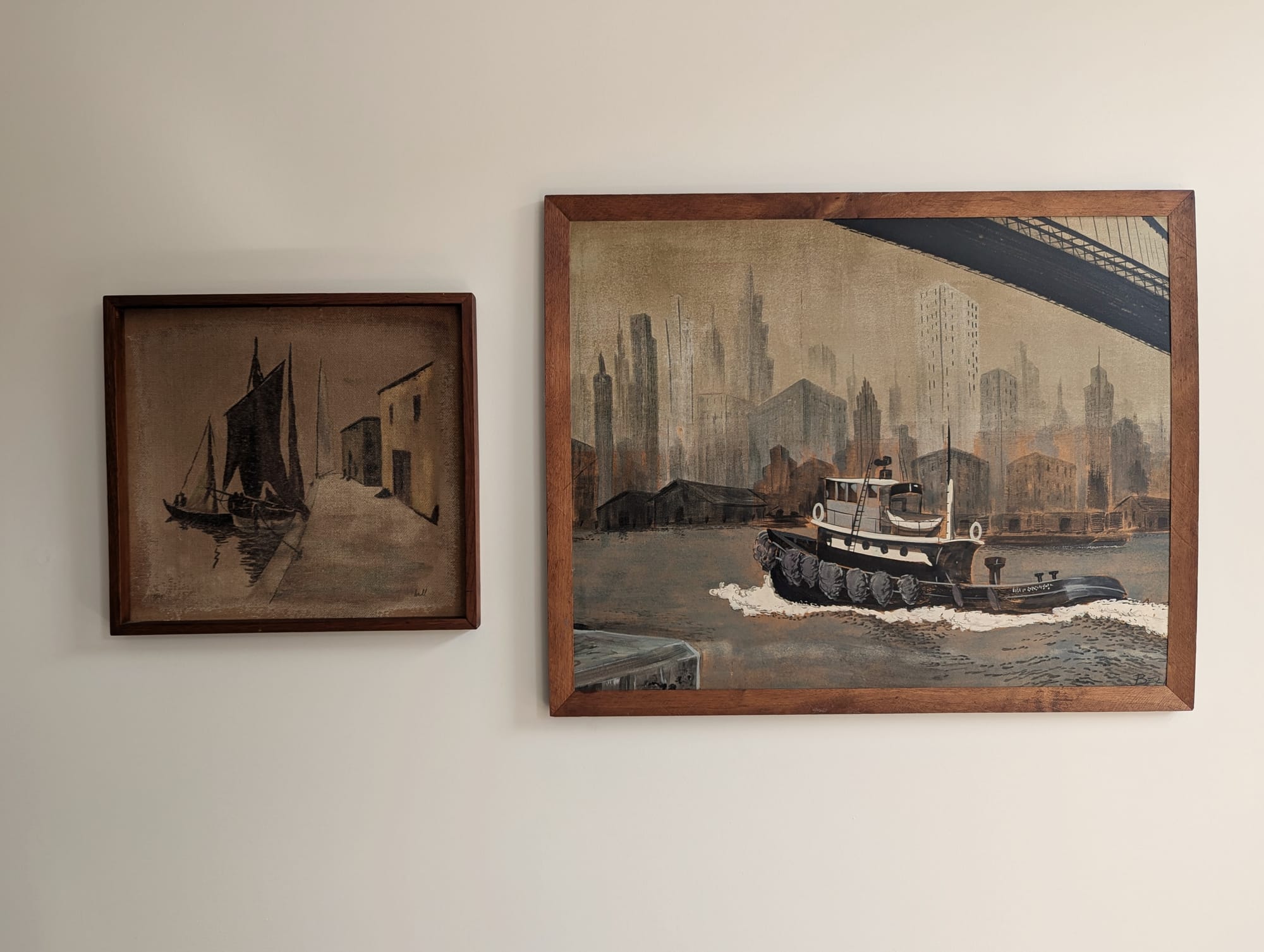Pete


This record is so Frankie can have a better idea of her parents and what made them. To that end, Pete is who and what I most closely associate with the word "grandpa." Grandpa Pete was not my biological grandfather. My mother's father died when she was in her early twenties. Pete was my Grandma Hazel's second husband. I say without any hyperbole that I learned more about how to live from Pete than anyone else.
Pete was born in New York, he was a track star in high school, he attended the University of Maryland, he fought in Korea and became a cartographer for the Department of Defense. He had a daughter, Robin, with whom he had a tense relationship and tragically outlived. I have now shared virtually all of the biographical details of Pete's life before Hazel that I know for certain.
Pete and Hazel met in the eighties when they were both living in Washington, D.C. At some point, they relocated to Fairview Beach, a small hamlet on the Potomac just outside of Fredericksburg. It is here that I spent my childhood; not in terms of days logged, but rather, my memory of childhood is psychologically set in Fairview Beach with Pete, Hazel, and occasionally my parents.
Fairview Beach, as a setting, really deserves its own treatment. A kind of low-budget Margaritaville for the fixed-income crowd, it feels like a mobile home park that came into modest money. There's a marina that calls itself a yacht club, right at home in a place that calls itself a beach but is really just a muddy river bank. To its residents, though, especially Pete and his rat pack of aging wannabe playboys, it was a paradise unlike any other. They drove golf carts, started drinking early at the "yacht club", ogled the bikini-clad girlfriends of men using the boat ramp and told dirty jokes. They didn't do this once a month, on Fridays, or just on big Holiday weekends. Pete and his gang did this every. single. day. Winters meant fewer bikinis but the remainder of the agenda stayed intact.
Pete was an artist vocationally and temperamentally. Aside from drinking, creating was his defining pathology. His art, mostly nautical scenes, is impressively broad in terms of style. Pete would paint impressionist, realist, or romantic scenes of sailboats, tugs, and rowboats. Sometimes, they would be set against the skyline of his native New York, but more often, they would feel foreign, even antiquarian. Places and times that existed only in his imagination.
More impressive than his range was his resourcefulness. Canvasses could be anything flat that would hold paint. The paint itself was a motley assortment of pigments from disciplines as wide-ranging as model trains to standard indoor latex. The backside of his paintings often revealed the logos from packaging. Yet, on the white-washed walls of our newly renovated apartment, they read as fine art.

Pete applied this inventiveness across nearly every facet of his life. Pete spent his days at a chest-high bar in his living room. The bar was covered in ongoing projects ranging from boat building and model train cars to culinary experiments and everyday inventions. He loved kites. Designing, building, and flying them. I remember seeing a prototype of a box kite with sails made from 12x12 ceramic tiles. A kite that could obviously never be flown. I now see the facile absurdity of this design as a reflection of both his creative confidence and his view of the world as inherently malleable. When the license plate "DRIFTWOOD" was already taken, he reserved "DR1FTWOOD" then painstakingly matched the blue tone of Virginia's license plates and painted serifs on the "1" to look identical to the "I" he originally wanted.
Pete read voraciously, gravitating towards virtually anything containing the printed word, be it the daily newspaper or arcane operating manuals. The parts of the bar not occupied by projects, his ashtray, or a glass of wine were covered with stacks of books and papers he would dive in and out of throughout the day. He would tap his finger on sentences and passages he found compelling. This physical tick seemed to somehow store the information permanently in his mind. His learning was unencumbered by any notion of achievement, and I assume these disparate nodes across multiple disciplines served to shape his unique form of creativity. He understood intuitively that synthesis has far greater value than analysis. It is perhaps this feature of Pete's personality that has had the most impact on my life.
Pete was neither a rebel nor a radical; his unbounded existence had an authenticity I now recognize is extremely rare. He loved and idolized Frank Sinatra. Ironically, the image of an independent libertine that Sinatra meticulously cultivated, Pete embodied naturally. Like all men, I am sure Pete was also flawed. Like all of us, he surely harbored doubts, resentments, and regrets, but my memory of him contains none of these details. In this, Pete taught me his most valuable lesson: The greatest legacy is that simply your way of being inspires just one person to live more authentically.
Pete's days at his bar are spent tinkering, reading, and thinking. His small, consistent community in a place he loved. His unflinching service and care to my grandmother as her mind and health deteriorated far faster than his own. More and more, these have come to represent an idealized life for me. Simple but full and teeming with passion for a life on one's own terms.